Of Germany’s many cities, Hamburg may not be the one that immediately stands out as a tourist destination. Though it is Germany’s second largest city, Hamburg is also a major port city, which is something that doesn’t normally scream tourism. But Hamburg has managed to turn its harbor, not to mention its edge and character, into the exact reason why you need to visit.
With a broad range of attractions, no one could accuse Hamburg of being a “one-note” destination. The best places to visit in Hamburg cover many bases, from architecture and history, to nightlife and model trains. Following our Hamburg itinerary, you’ll have no problem navigating this unlikely jumble of attractions and come away from it with no doubt about what to do in Hamburg in 2 days.
Best Time to Visit Hamburg
When planning your weekend in Hamburg, the first thing you need to think about is the timing of your visit. With weather and high season to consider, picking the right time can make all the difference. The last thing you want is miserable weather or crowded attractions and accommodation at prices well above normal.
Most cities in Europe tend to have their high season at around the same time, but Hamburg is a little different. For Hamburg, the busiests months are generally May, August, and October, so expect hotel prices to go up during these months. Spring, summer, and early autumn bring with them the best weather, meaning that the best time to visit Hamburg is typically in April, June, or September.
It’s important to note that summers in Hamburg are usually milder than elsewhere in Germany, so sightseeing even in the heat of summer is still enjoyable. The same can’t be said for the winter months of January and February, when the city gets downright chilly.
Check flights to Hamburg from the USA (from $292) and UK (from £28)
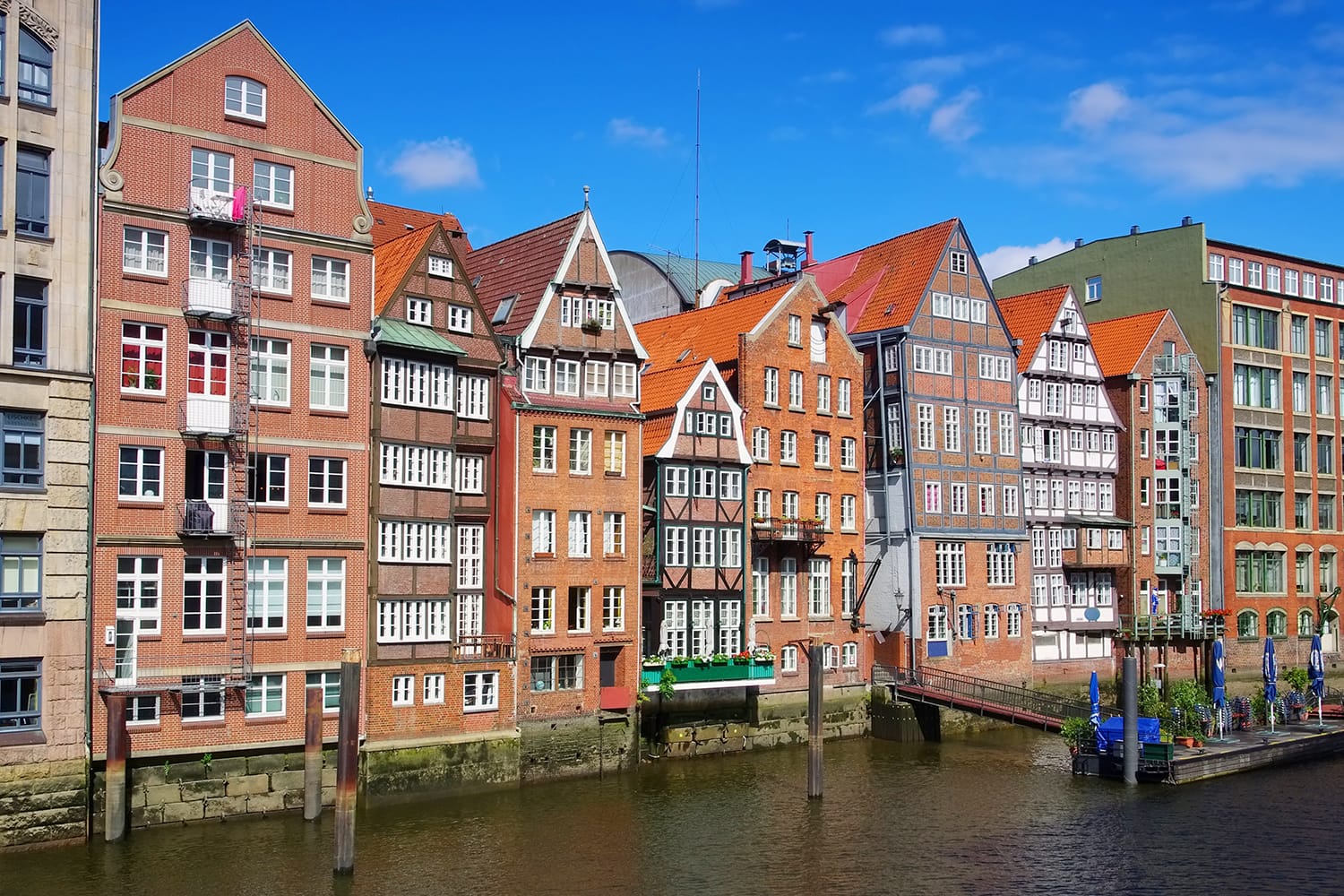
How to Get Around Hamburg
To make the most of your time visiting Hamburg, you’ll want to know the best ways to get around the city. Hamburg is a large city and its attractions are spread out across many different neighborhoods, so you’ll want to be smart when planning your days. Walking from one end of Hamburg to the other, while possible, is going to wear you out pretty quickly.
Thankfully, Hamburg is home to a very complete public transport network. Metro, trams, buses, and even ferries run across the city and are able to take you wherever you need to go. Tickets work across the network and can be bought from machines at metro stations and some bus stops, as well as from bus drivers. A single trip ticket is the most common type, it allows transfers and costs €3.30.
If you’re flying in to Hamburg, it’s quite easy to reach the city center from the airport. With a standard metro ticket you can hop aboard the S-Bahn metro and in 30 minutes you’ll be at the main train station in the city center. Note that the metro doesn’t run after midnight but there are night buses instead that do the same route.
Recommendation: To save time and money we recommend you get the Hamburg Card. The card gives you free unlimited access to public transportation as well as discounts of up to 50% on around 150 sights and museums.
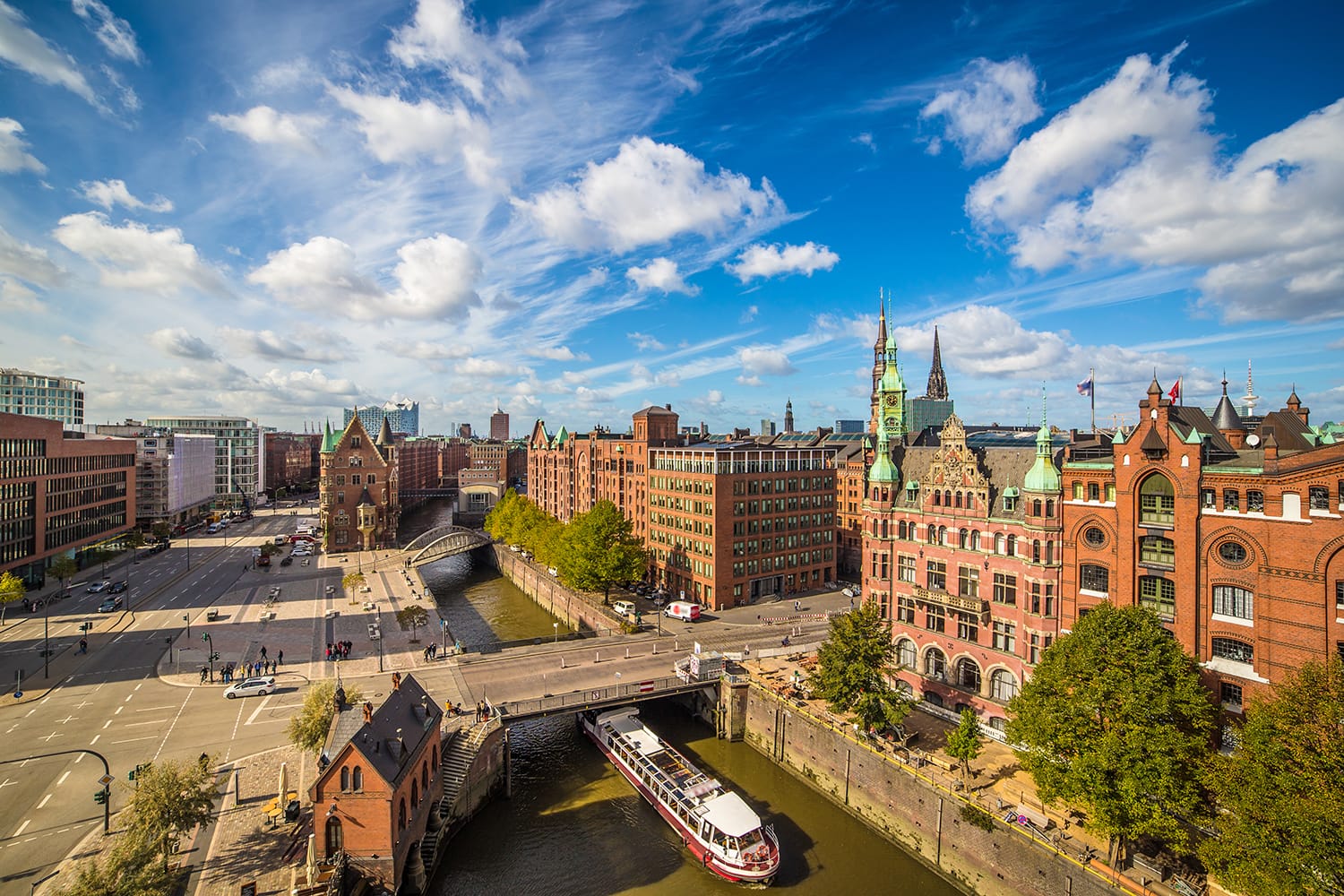
Where to Stay in Hamburg
A question that’s on every traveler’s mind when they plan a trip is where the best place to stay is. Since Hamburg is quite a spread-out city, the issue of where to stay in Hamburg can be a tough one. Regardless of where in the city you stay though, you’ll find that you have better options and prices the earlier in advance you book.
Unlike many European cities, there isn’t all that much accommodation in the very center of the city. As such, the best places to stay in Hamburg are generally places with good access to the city’s public transport, whether they be in Hamburg-Neustadt, Hafencity, or St Pauli. A word of warning though, one part of the city you don’t want to stay in is the inner streets of the St Georg district. While around the district’s edges, like near the train station and Kirchenallee is generally fine, the streets around Steindamm and Hansaplatz are rather rough.
For a truly special experience, stay inside the city’s iconic Elbphilharmonie concert house at The Westin Hamburg Hotel. With wonderful city views and elegant room design, this five-star hotel is stylish and also positions you perfectly for sightseeing around the city.
If you’re looking to balance cost with comfort, the Hotel Baseler Hof is a great option for your visit. This four-star hotel is surprisingly affordable and boasts both a convenient location for public transport and also excellent service.
Don’t forget that Airbnb is another option if you’re after apartments and affordable accommodation, as you can get up to $40 off your next Airbnb booking if you use our link.
Hamburg isn’t the most budget-friendly destination but for backpackers, look no further than MEININGER Hotel Hamburg City Center. Although located out in Altona-Nord, the dorms and private rooms here are great value for money and cleverly stylish.
For more accommodation options in Hamburg check out Booking.com. They continuously offer the best rates and their custom service is on point.
The Perfect 2-Day Hamburg Itinerary
Even though Hamburg isn’t as popular a tourist destination as cities like Berlin or Munich, the city won’t have any problem keeping you entertained while you visit. With 48 hours in Hamburg, you’ll be able to travel around the city and see neighborhoods like the historic center, Hamburg-Neustadt, Speicherstadt, and St Pauli. However, to find all the attractions scattered through these parts of the city you’re going to need our Hamburg travel itinerary to guide you.
However, before we get to our Hamburg itinerary, we just wanted to remind you to purchase travel insurance. You never know what will happen and, trust us, you do not want to get stuck with thousands of dollars in medical bills. As a wise man once said, “If you can’t afford travel insurance, you can’t afford to travel.” So don’t leave home without it.
SafetyWing offers travel insurance for only about $10 a week, making it a no-brainer to get. You can get a quick, non-binding quote below:

SafetyWing is, of course, not the only option available. Two other popular alternatives are World Nomads and Heymondo.
Now that you’re ready for your trip, it’s time we look at the best things to do in Hamburg. With them, you’ll have no problem filling your 2 days in Hamburg and have a blast doing so.
Day 1 in Hamburg
To start your visit off, it makes sense to first see the best of Hamburg with the city’s attractions along its iconic harbor waterfront.
Speicherstadt
For the most picturesque side of Hamburg, head for the unconventionally beautiful district of Speicherstadt. It may seem strange to make a beeline for Hamburg’s warehouse district, but once you start exploring there it becomes immediately apparent why. From any bridge in the area, you’ll be treated to views of high brick warehouse buildings endlessly looming over tight canals. When it comes to understanding the appeal of Speicherstadt, a picture is worth a thousand words.
This area is actually the largest warehouse complex of its type in the world and is even a UNESCO world heritage site, despite only being roughly a hundred years old. The complex is over 1.5km long, and with multiple canals and bridges there are plenty of views to be had. One view not to miss is that of the Wasserschloss, a striking building at the end of one of the islands in Speicherstadt, surrounded by the walls of warehouses.
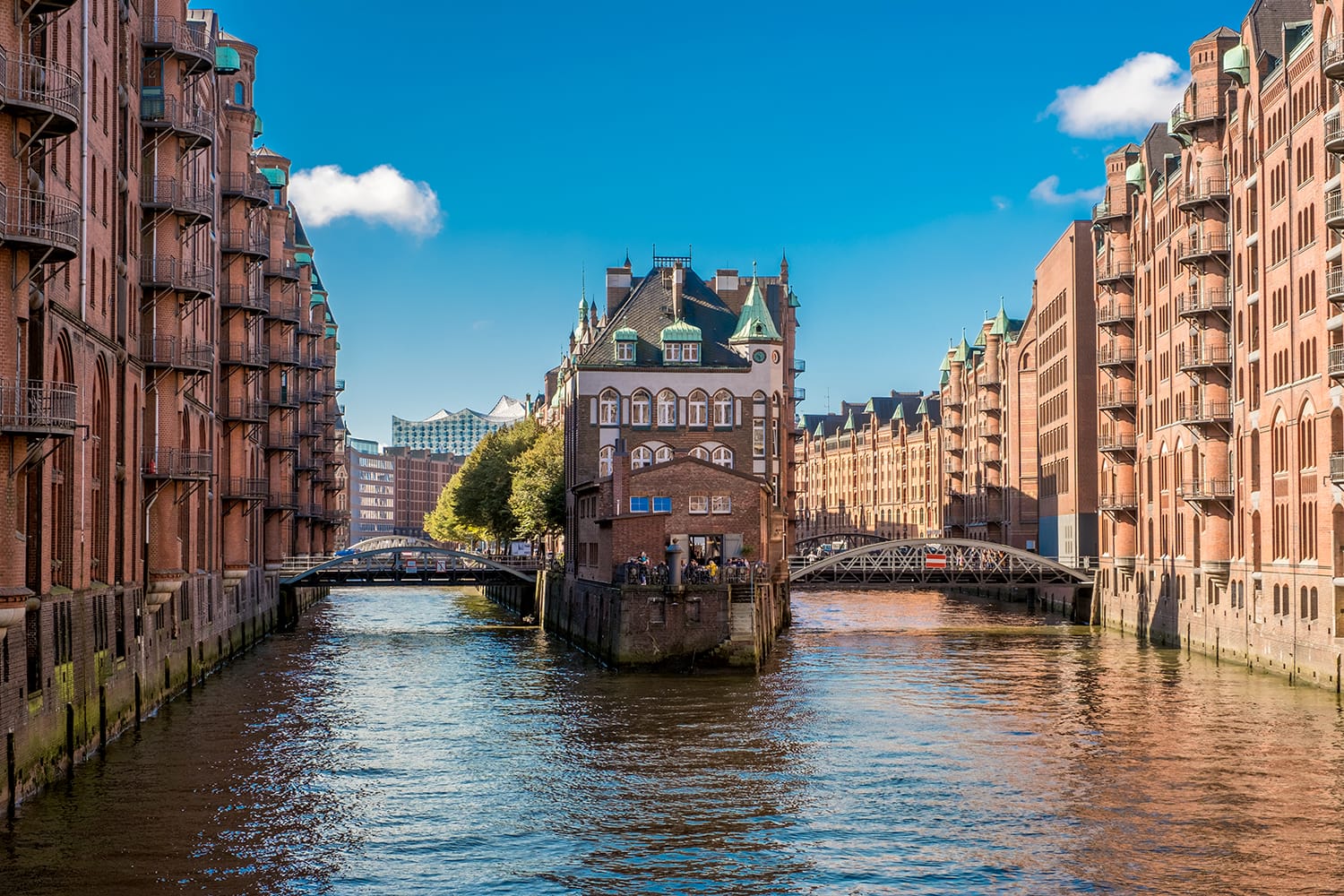
Elbphilharmonie
From Speicherstadt continue southwest to the Elbphilharmonie, one of Hamburg’s recent additions that has fast become an icon. This waterfront concert hall is architecturally unique thanks to the glass exterior on top that is shaped like waves or an iceberg. Not completely at odds with its surrounding, the bottom half is a renovated warehouse making it a natural fit along the harbor’s waterfront.
Besides concerts and performances being hosted inside the Elbphilharmonie’s many halls, the building features a popular panoramic terrace. Free to the public, visitors can head inside the hall and up to the terrace to admire the stylish interior as they go. It’s then possible to walk a lap around the outside of the building, appreciating the city skyline on one side and the harbor on the other.
Recommendation: If you want to learn more about this controversially building, consider booking a guided tour. During the one-hour tour you will get a complete overview of this fascinating building and enjoy great views of the city from the Elbphilharmonie Plaza.
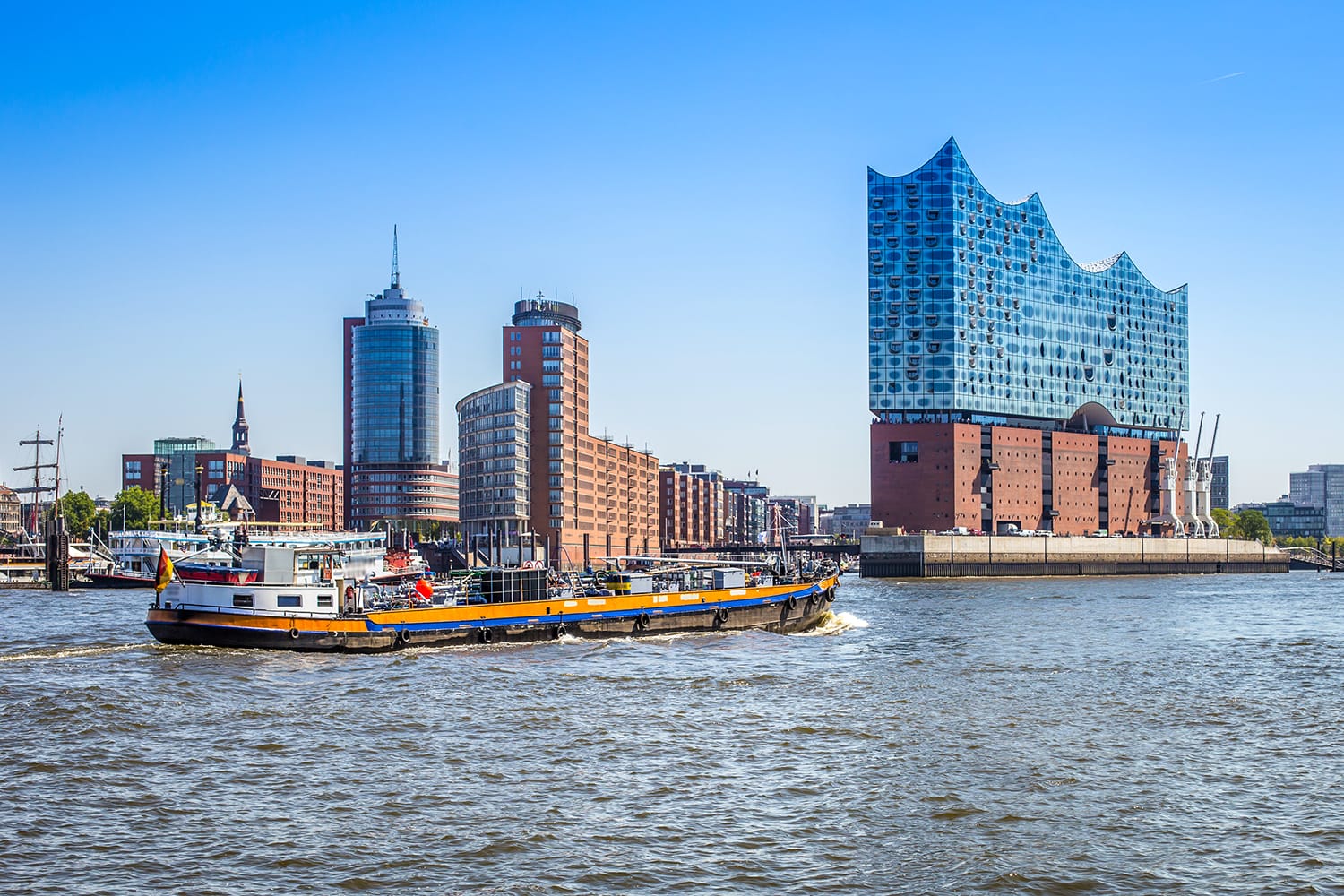
Harbor Cruise
With so much time spent in and around the harbor of Hamburg, who can resist a cruise across the water. You actually have various options open to you here, depending on how you want to do the cruise. The most typical cruise around Hamburg is an hour-long and departs from Landungsbrücken in a small boat which goes around the harbor and down the canals of Speicherstadt, when the water levels allow it. You can book this type of cruise here. There are also evening cruises available and depending how much time you have, we’d recommend it over the regular cruise. Speicherstadt illuminated at night is truly a sight to behold. Tickets to the evening cruise can be bought here.
A more vintage alternative is to hop aboard one of the historic paddle wheel steamboats that take you back to another era of the city. Unfortunately, because of their height and size, those won’t be taking you through Speicherstadt. Lastly, if you’re looking to save money, you can just take one of the HVV harbor ferries from Elbphilharmonie to Landungsbrücken which will only cost you a normal public transport ticket.
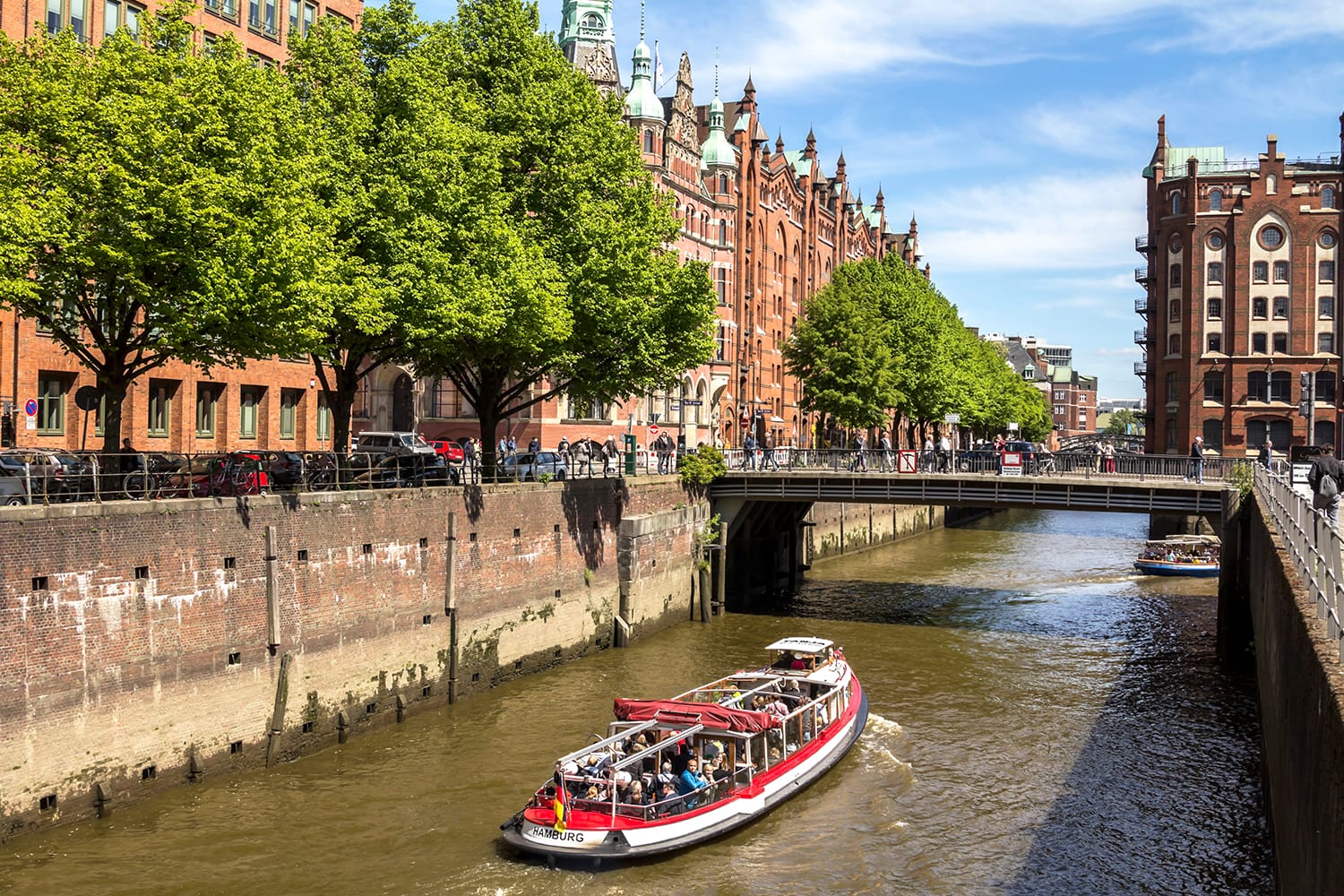
Old Elbe Tunnel
Along the city’s waterfront near the Landungsbrücken piers you’ll find the entrance to the oldest river tunnel in Europe. Known as the Old Elbe Tunnel, this historic tunnel from 1911 passes right under the harbor, taking you to the city’s southern side. While a tunnel may not sound overly fascinating, venture down to the bottom of the staircase and it’s clear this is no ordinary tunnel. You don’t necessarily have to take the tunnel all the way to the far end, but if you do, you’ll get a nice view back across the harbor. Watch out for bikes as they cycle past, and once you’re down there head back up in one of the large, antique lifts.
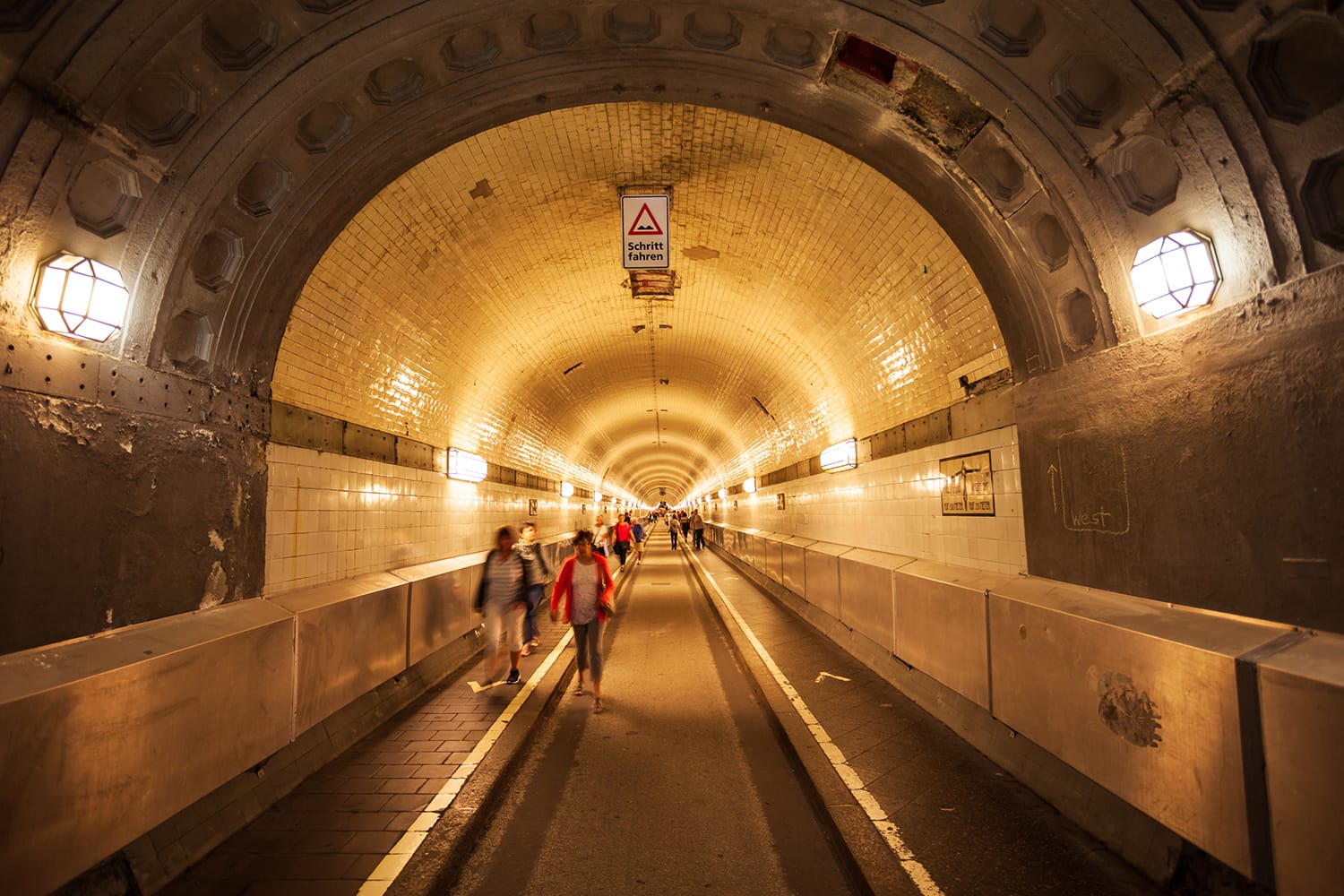
Portuguese Quarter
A short walk back towards the city center will bring you to one of Hamburg’s more unusual neighborhoods. Arriving in the Portuguese Quarter, you could swear that you really have stepped into a city somewhere in Portugal. A collection of only several streets, the area earns its name from the local Portuguese community and the many Portuguese and Mediterranean restaurants that have come with it. And yet, even the atmosphere and architecture here is slightly different. This is a good part of town to remember come dinner time if you’re after something other than German food.
Krameramtsstuben
Just up the hill across the Michelwiese park, a single little street offers another slice of historic Hamburg. Known as Krameramtsstuben, this collection of half-timbered houses around a courtyard include the oldest residential buildings in the city. Dating from the early 17th century and built to house widows of local grocers, the buildings have since been surrounded by modern houses. One house has been converted into a museum, allowing visitors to see what an apartment from the 1850s once looked like.
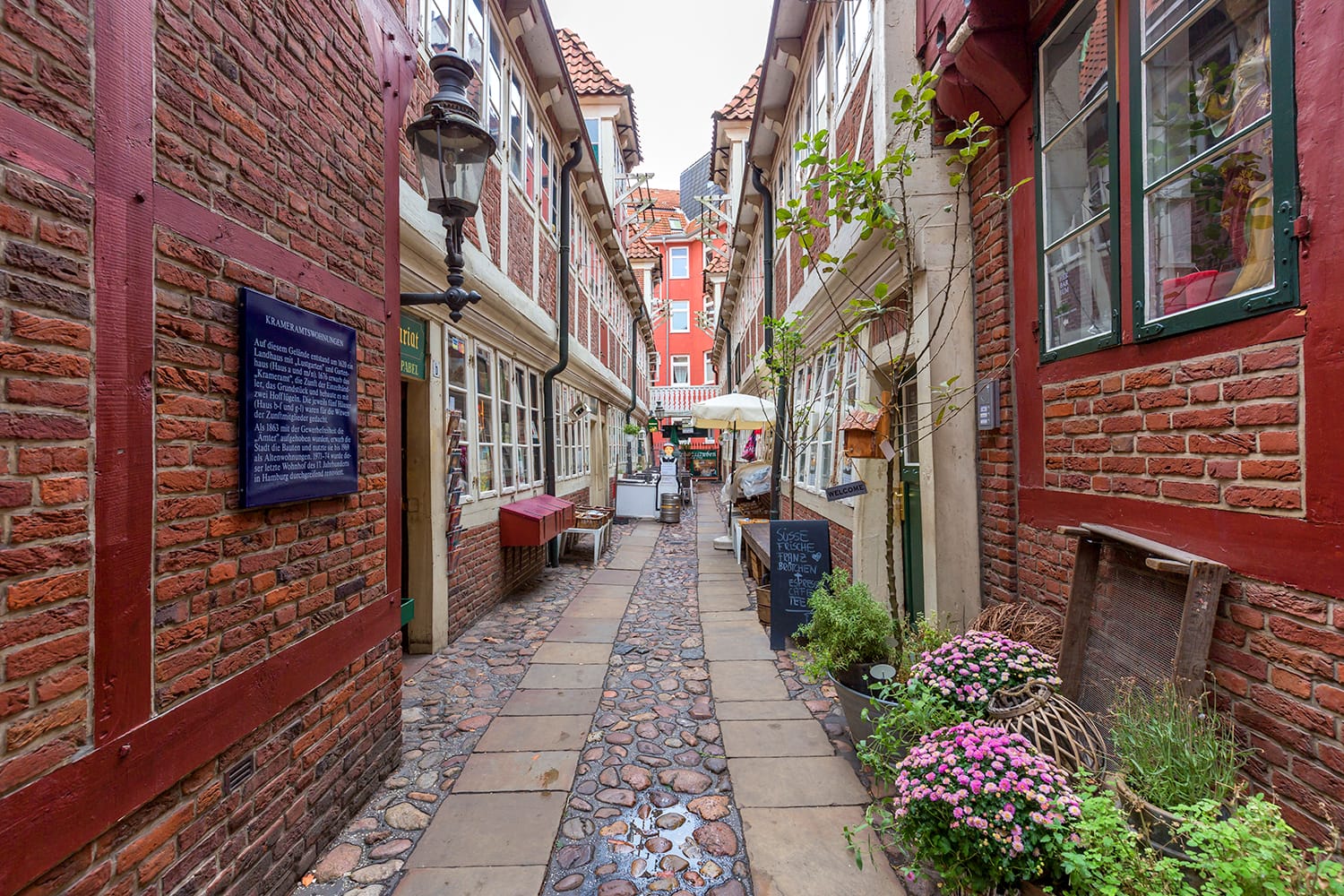
St Michael’s Church
St Michael’s Church is hard to miss from here, especially since it’s Hamburgs largest church, circle around to the front and head inside. While only a hundred years old, churches have stood on this spot for centuries. But the constant rebuilding and renovation has had one upside, the incredible baroque interior of the church’s main hall. Inside, the church looks more like a grand theater than a church and features five different organs.
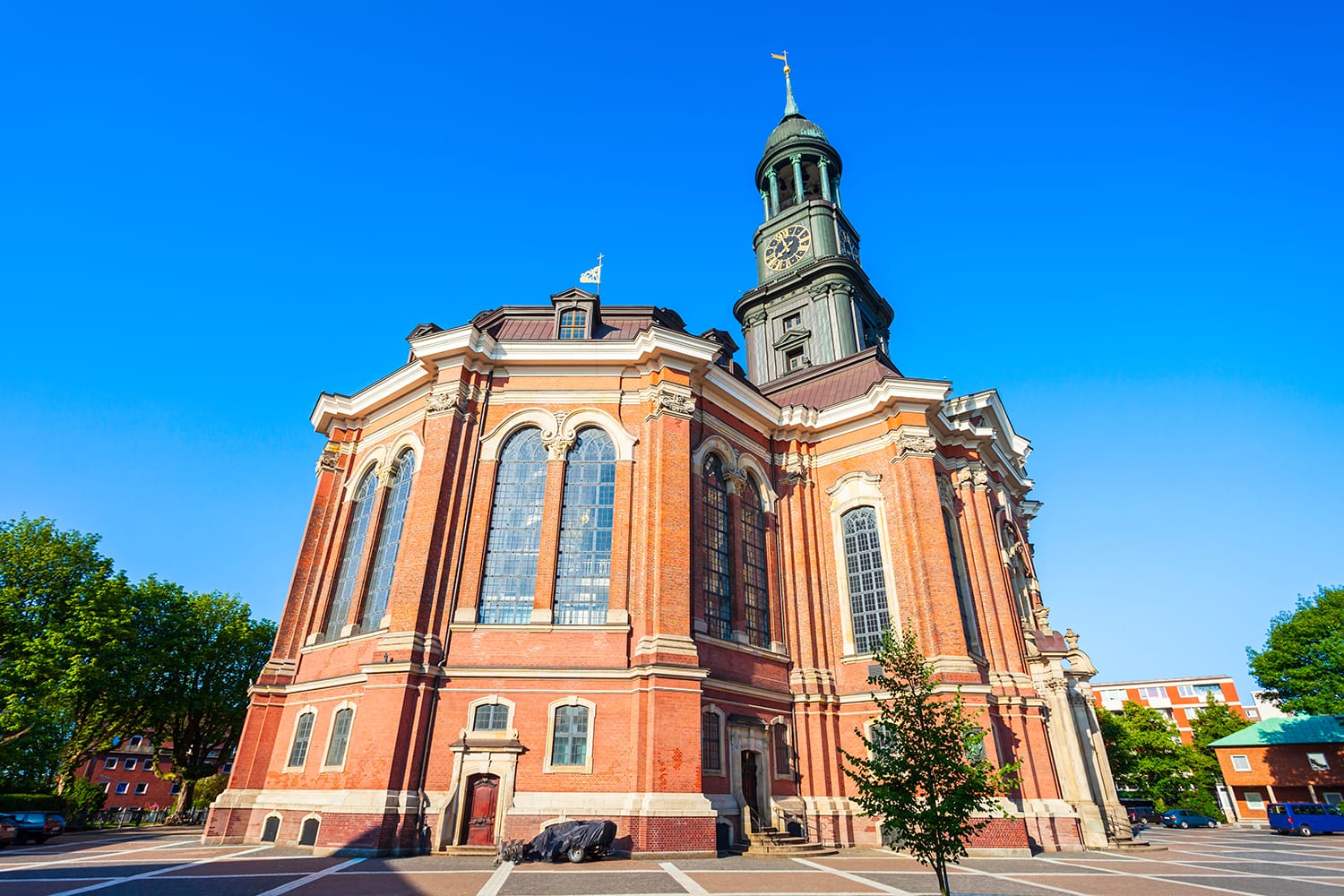
Besides the main nave, visitors can delve into the church crypts or climb the bell tower to the 106-meter-high observation deck. While the church’s tower is a fixture of the city’s skyline, you’re able to see the rest of Hamburg’s cityscape from up there.
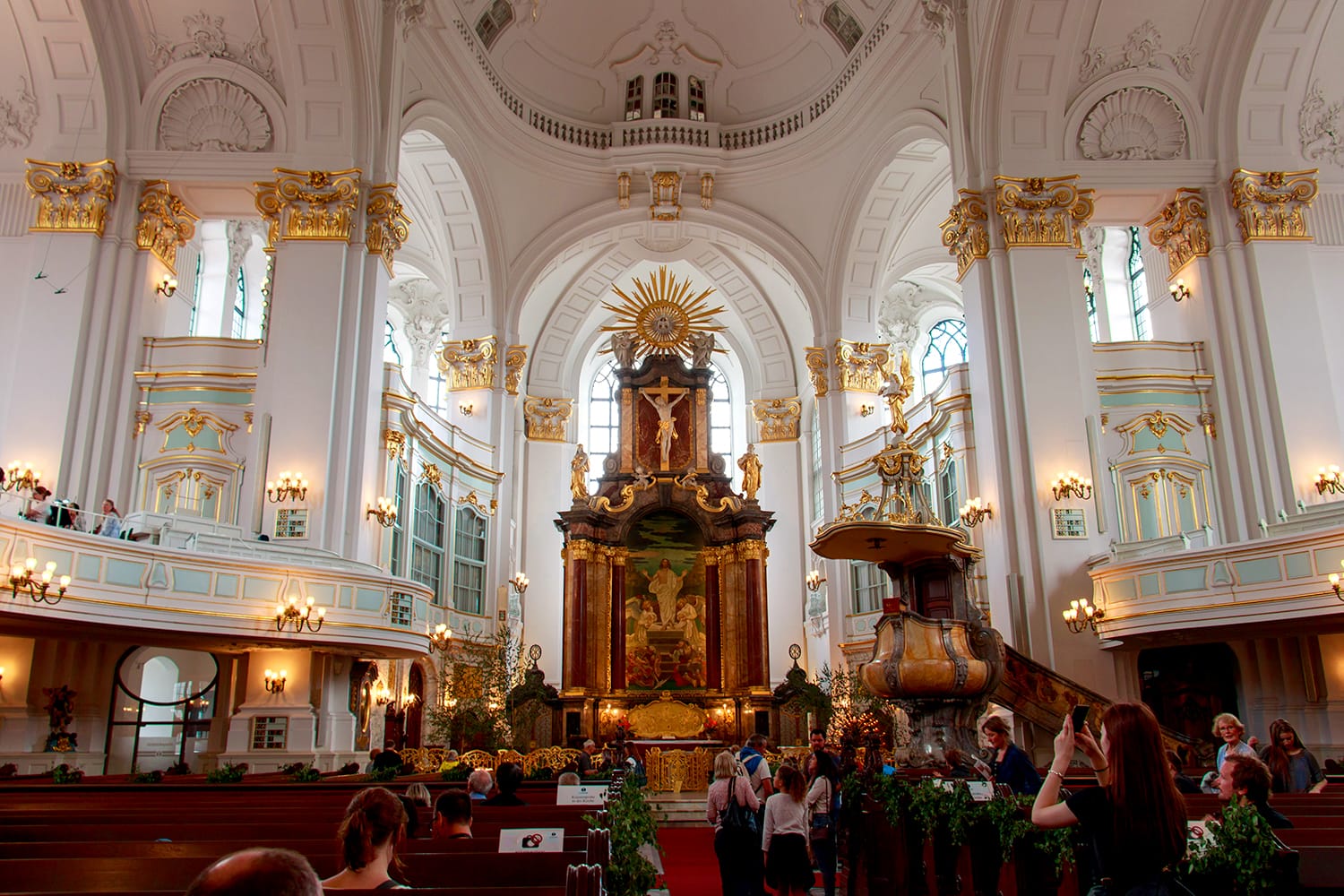
Day 2 in Hamburg
There’s plenty more of Hamburg to see with your second day in the city, this time moving away from the harbor front to other parts of the city including the city center.
Miniatur Wunderland
Kick off the day with one of Hamburg’s most adored attractions, the Miniatur Wunderland model railway and miniature airport. The world’s largest model railway, children and adults alike will marvel at the immense scale and fine detail of these recreations. Not just limited to trains and planes, entire cities and attractions have been assembled in the nine sections of the building, from the city of Hamburg to Las Vegas and Vatican City. All ages will find the painstaking detail of these exhibits impressive, especially with some taking up as much as 300m2 in space. Priority entrance tickets to the Miniatur Wunderland can be bought here.
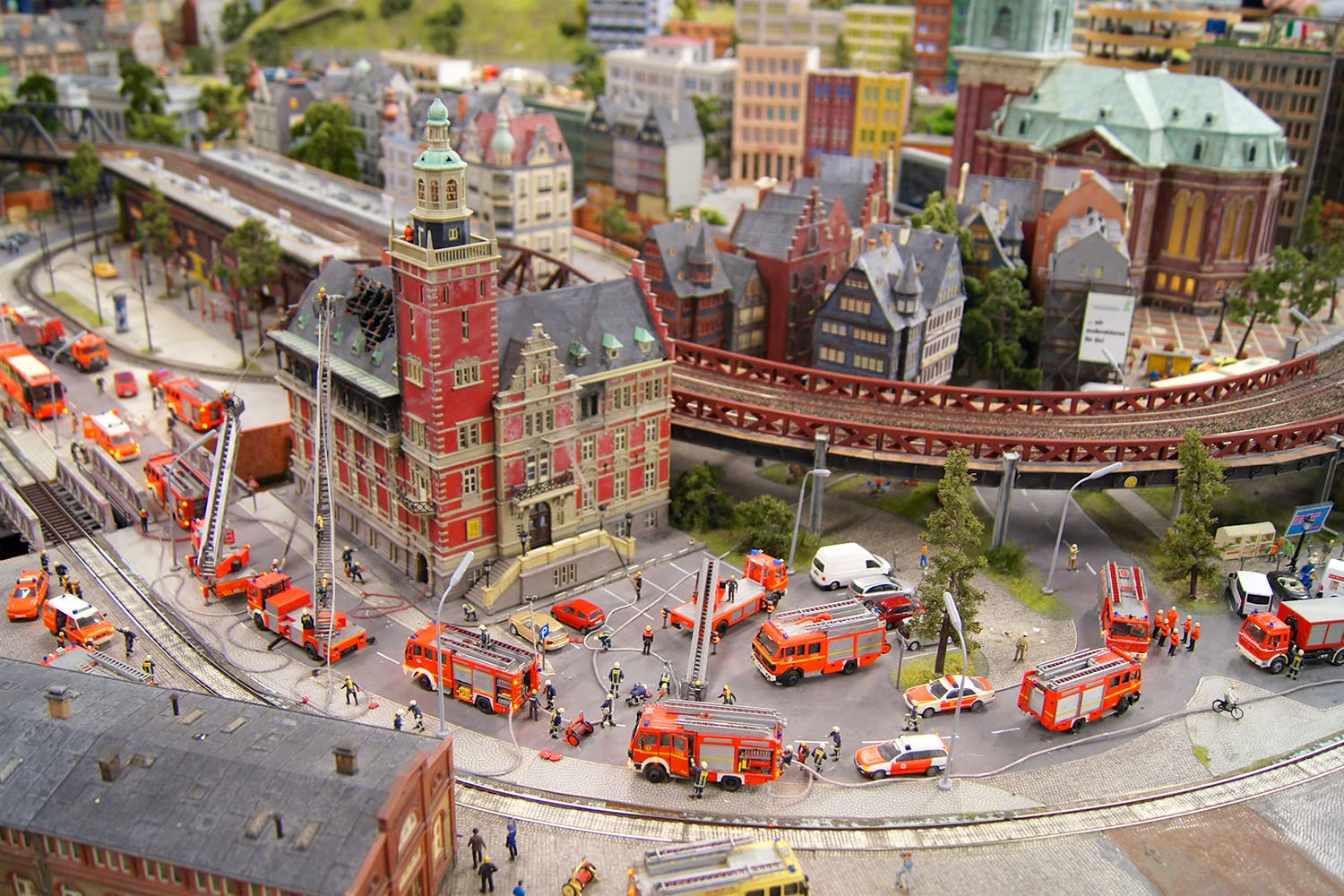
Rathausmarkt
Next, it’s over to the very heart of Hamburg to see the city’s main square, the Rathausmarkt. This square would be rather ordinary were it not for one major landmark, the grand sight of the Hamburg City Hall. Rathaus in German, the City Hall boasts not only an elaborate Neo-Renaissance design but also 647 rooms inside its huge frame. Be sure to visit inside the City Hall to see the glamorous interior of the main foyer as well as the fine detail of the central courtyard.
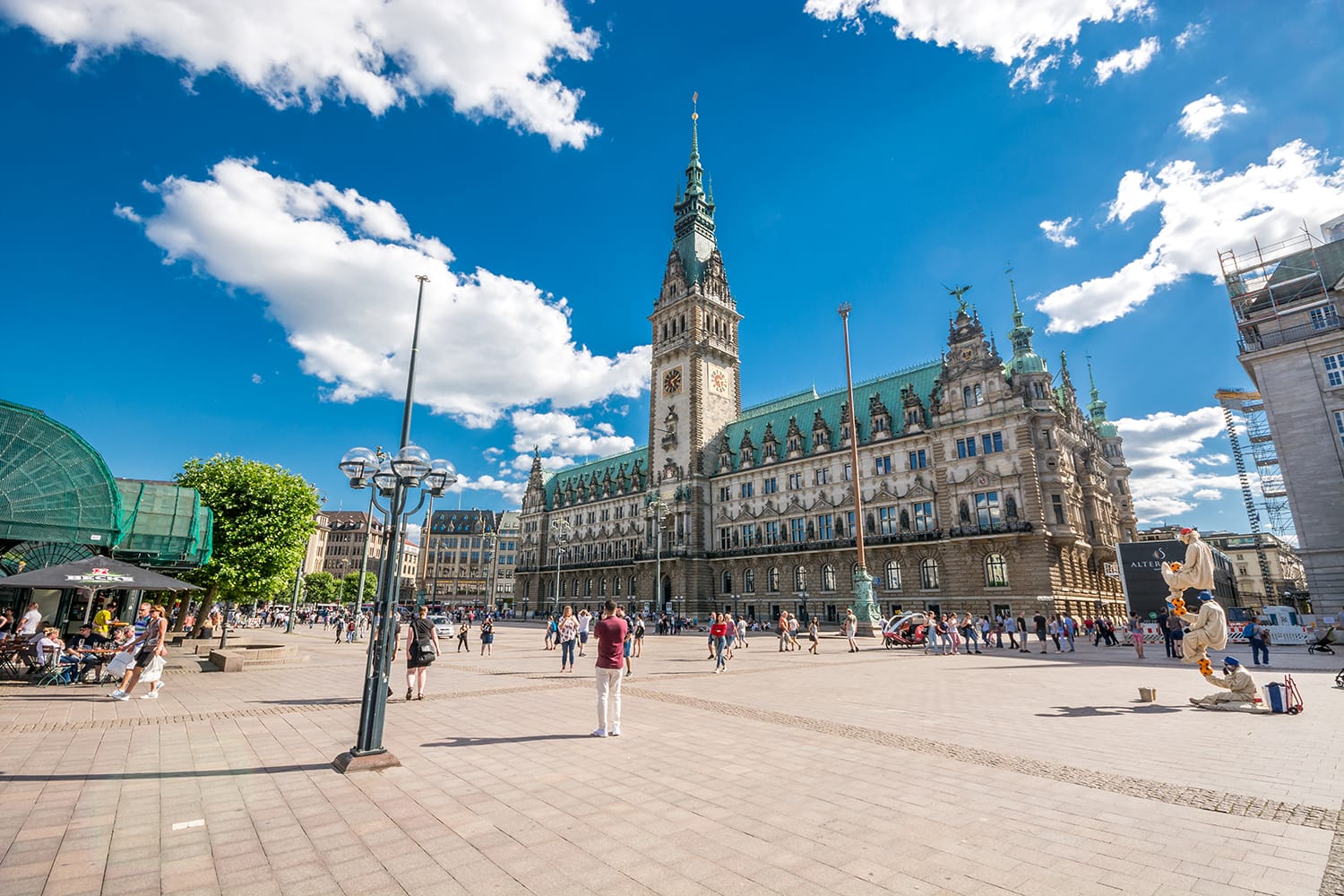
Kleine Alster Canal
Along the northern edge of the Rathausmarkt lies the Kleine Alster canal, one of several that flow through the city center to the harbor. Besides creating even more scenic waterways to walk along, it’s home to a couple of landmarks. The first is a somewhat unusual memorial to those who died during both world wars. What makes it odd is that its design looks almost like an Egyptian obelisk which neither fits with its purpose or the area around it.
The other main attraction though, the Alster Arcade, makes far more sense. Running along the northern side of the canal, this covered arcade is home to boutique stores and fancy cafes and restaurants, giving off a strong Venetian vibe in the process.
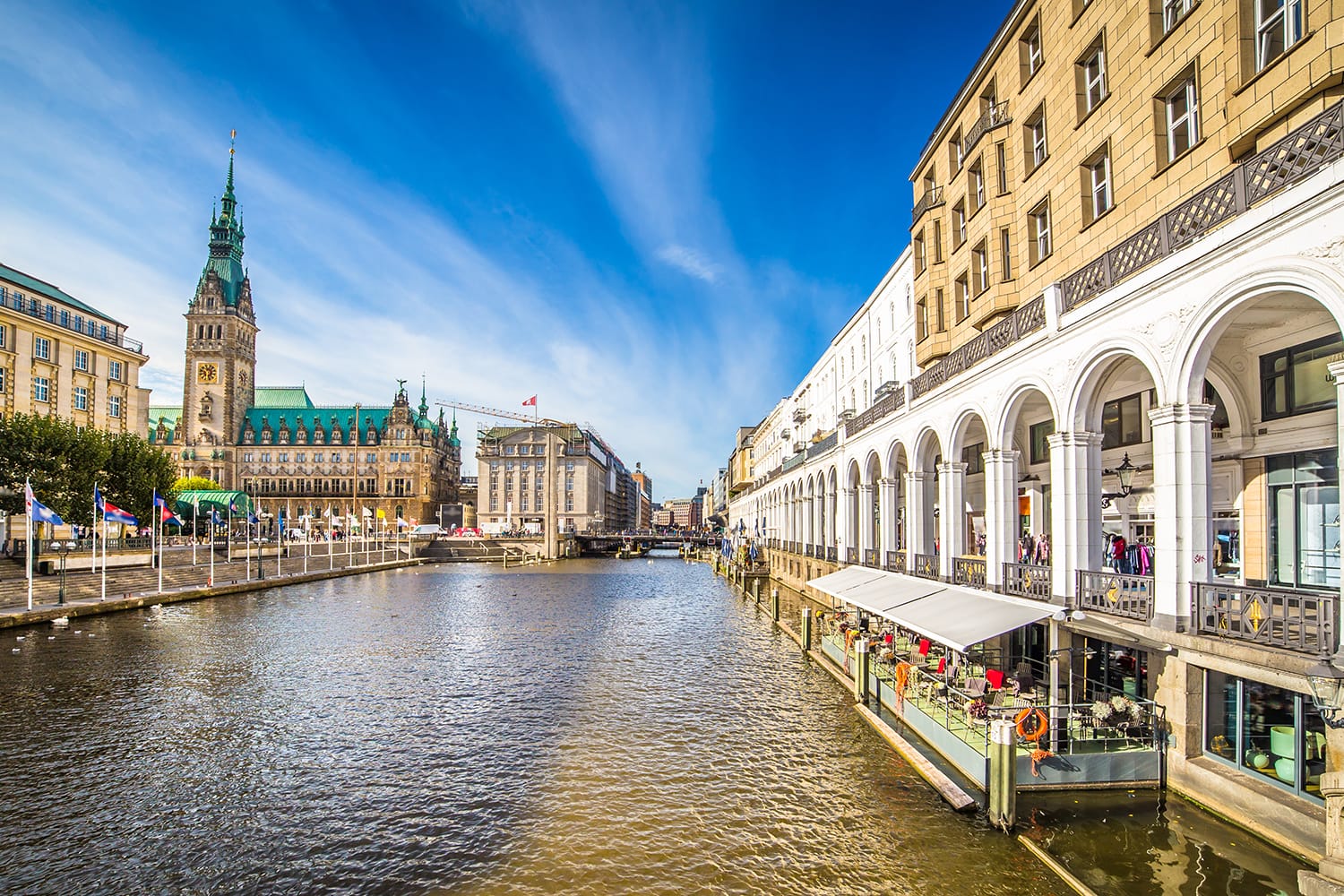
Inner Alster Lake
Following the Kleine Alster canal you reach the Inner Alster Lake or Binnenalster, a picturesque lake that is a lively part of local life. Right along one edge of the artificial lake, the Jungfernstieg is a series of terraces that leads down to the water and is a popular place for people to meet or hang out. It’s also nice to walk around the lake, especially to see the Hamburg skyline from the far side. With ferries heading off for the Outer Alster lake and the huge jets of water from the Alster Fountains, there’s plenty of scenery to be seen.
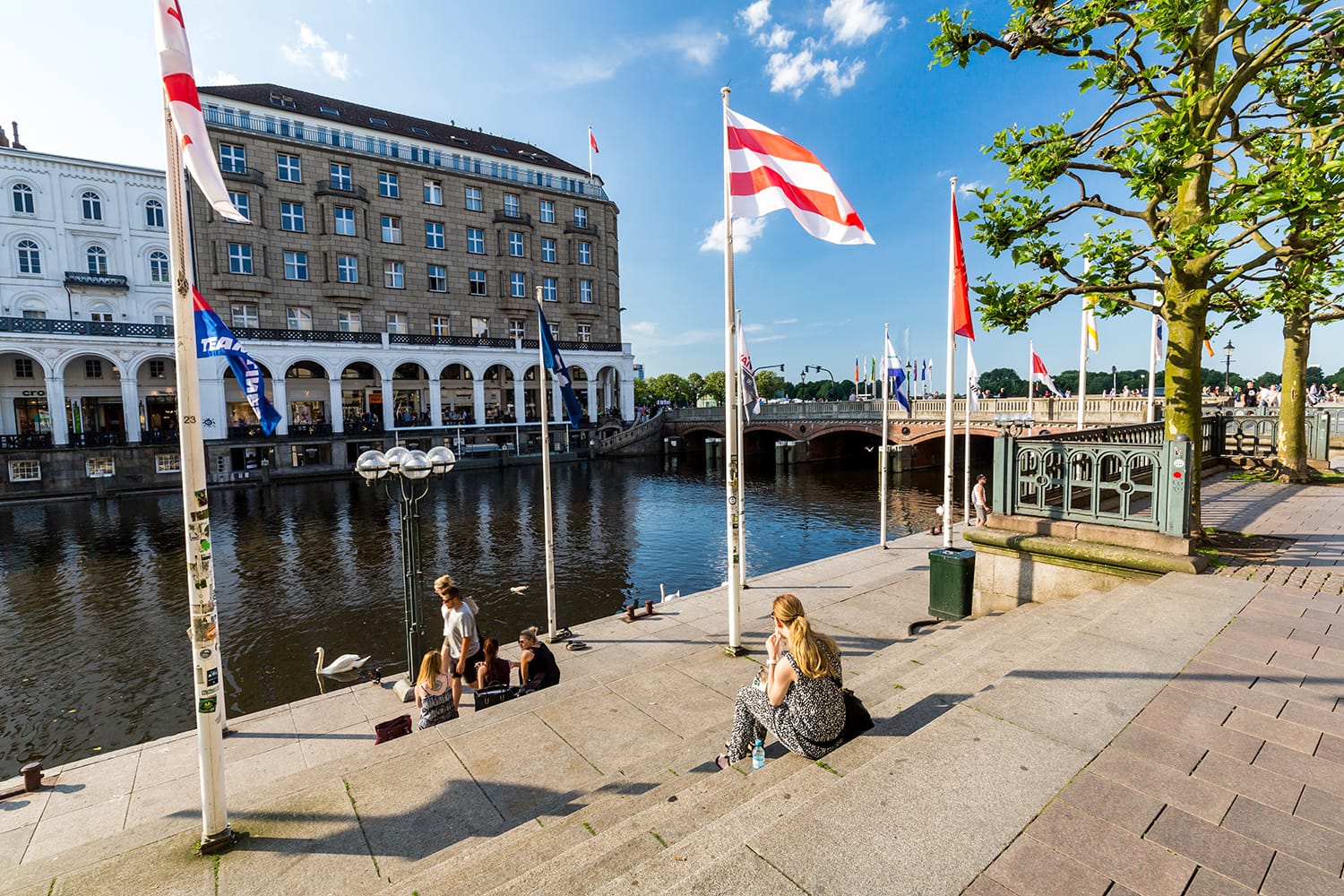
Kunsthalle Hamburg
Just off the eastern edge of Binnenalster sits one of Hamburg’s most important cultural institutions, the Kunsthalle Hamburg art museum. The official art museum for the city, it is one of the largest in all of Germany, with a permanent collection that stretches from the 15th century right through to the modern era.
Exhibits here are arranged by era, with many having one or several themes, such as the 19th century French collection with pieces by Monet, Manet, and Degas among others. Besides the permanent collection, there are often temporary exhibits and opportunities to see behind the scenes of the museum.
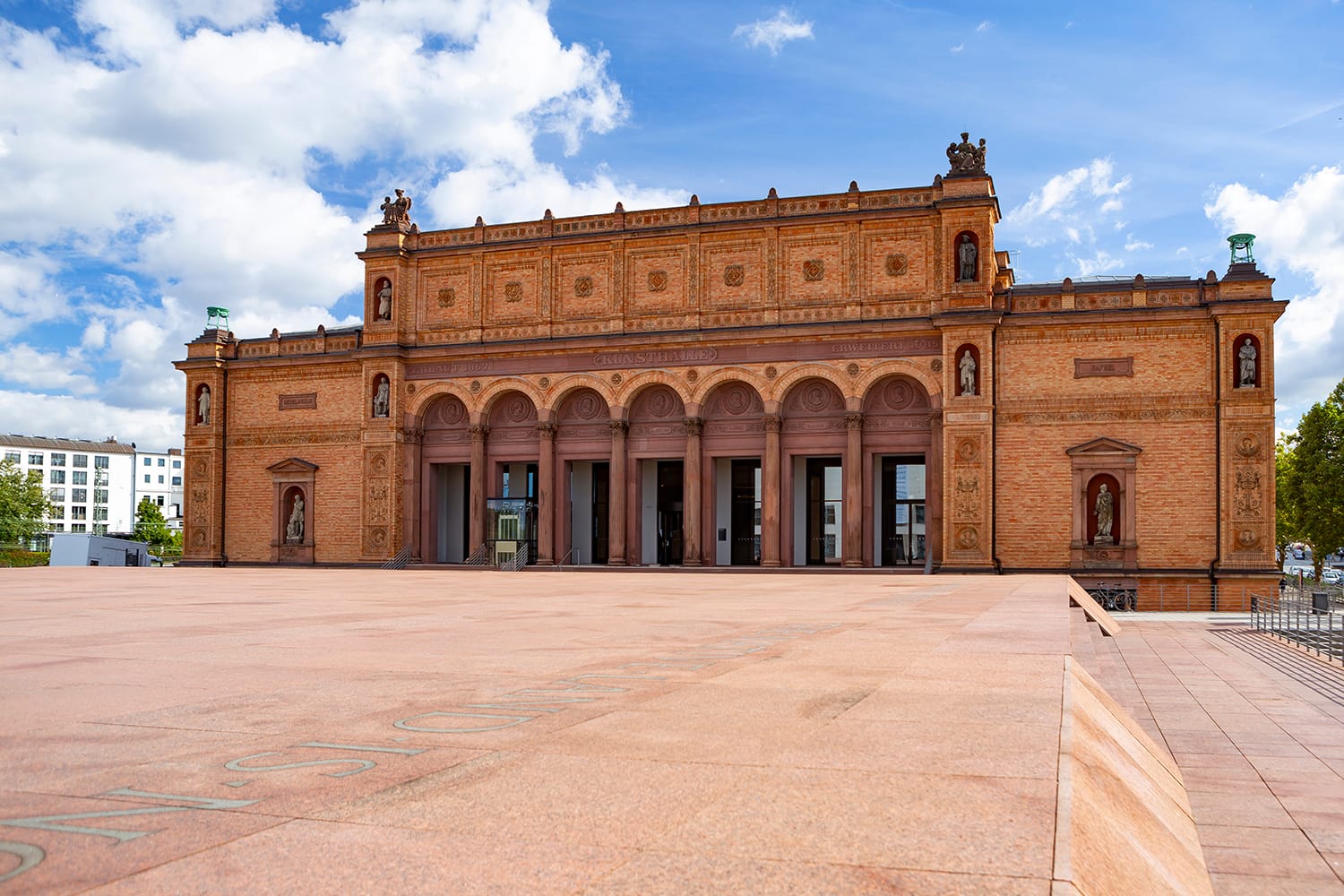
Reeperbahn Red Light District
Much like in other cities in this part of Europe, Hamburg is home to a rather well-known Red Light District. What separates the Reeperbahn Red Light District from others though, is that it’s not just home to X-rated establishments. Along the long Reeperbahn promenade, you can find bars, pubs, restaurants, and even a handful of theaters. This is Hamburg’s nightlife district and while there are plenty of adult venues, there’s plenty more to the Reeperbahn than that. Seeing this place on a Friday or Saturday night is a sight to behold and a great way to end your visit.
Recommendation: If you want to learn a little bit more about the history of the neighborhood as well as the business of prostitution, consider booking a guided, adult only, walking tour for this part of the Hamburg itinerary.
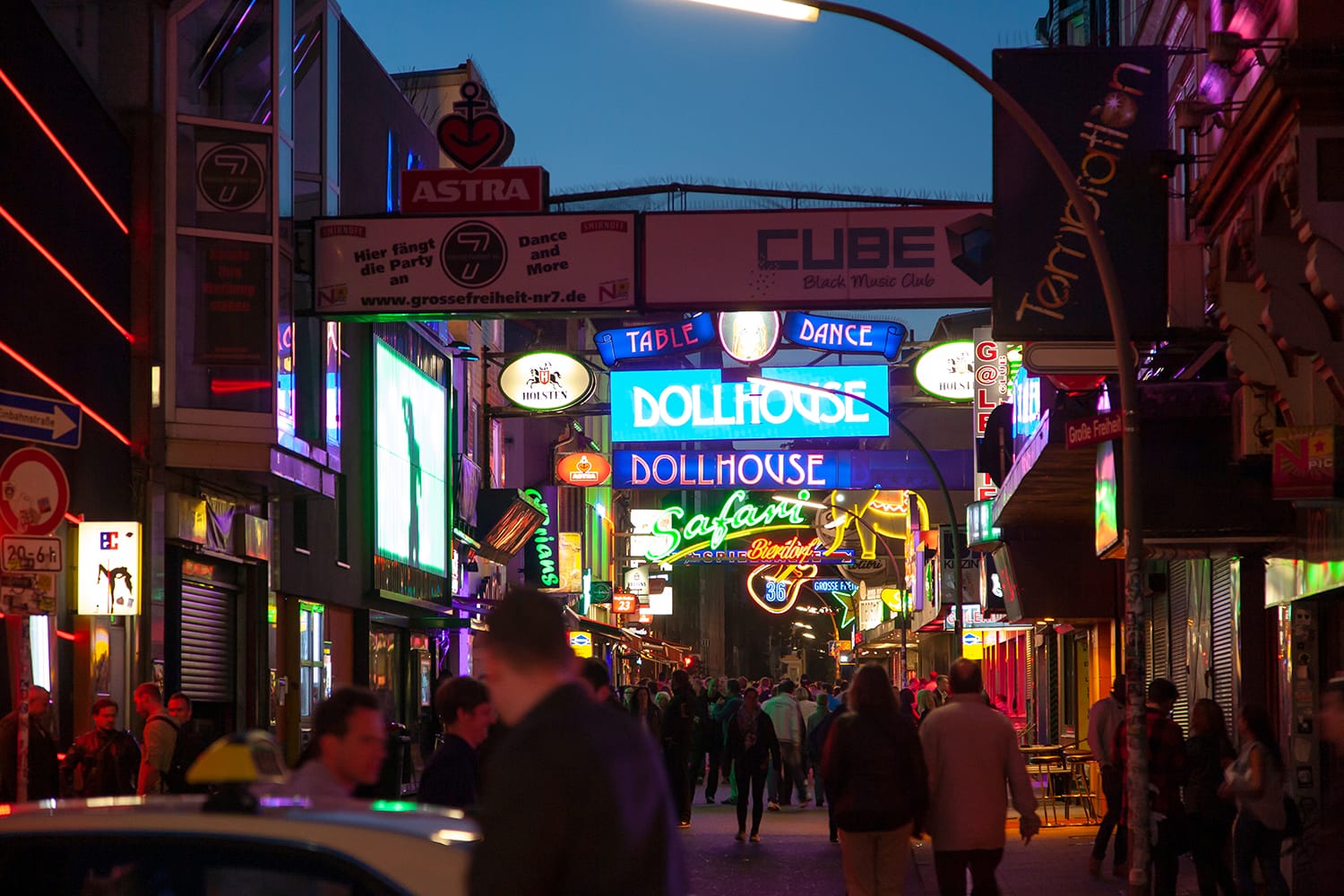
That just about sums up everything you need to know to visit Hamburg in 2 days. It’s a city with many different sides to it, so no matter how you like to travel, chances are Hamburg’s got something for you.
If you have more than 2 days in Hamburg, consider doing a day trip or two outside the city. To give you some inspiration, here are some of the best day trips from Hamburg.
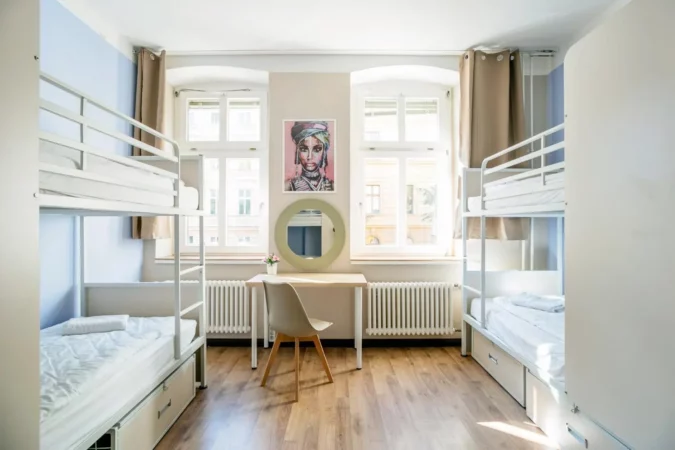


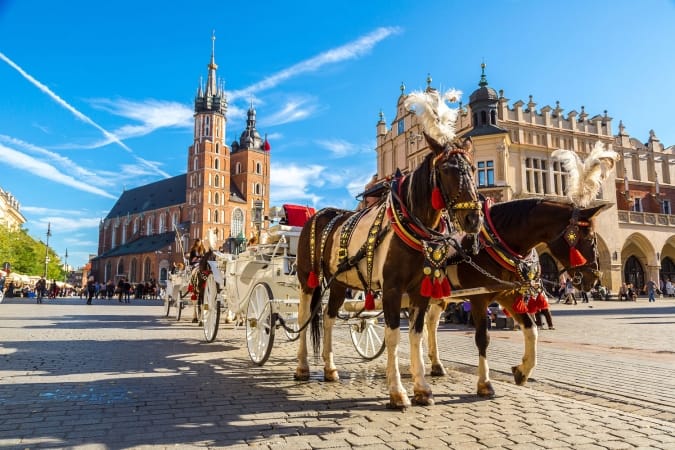




Comments